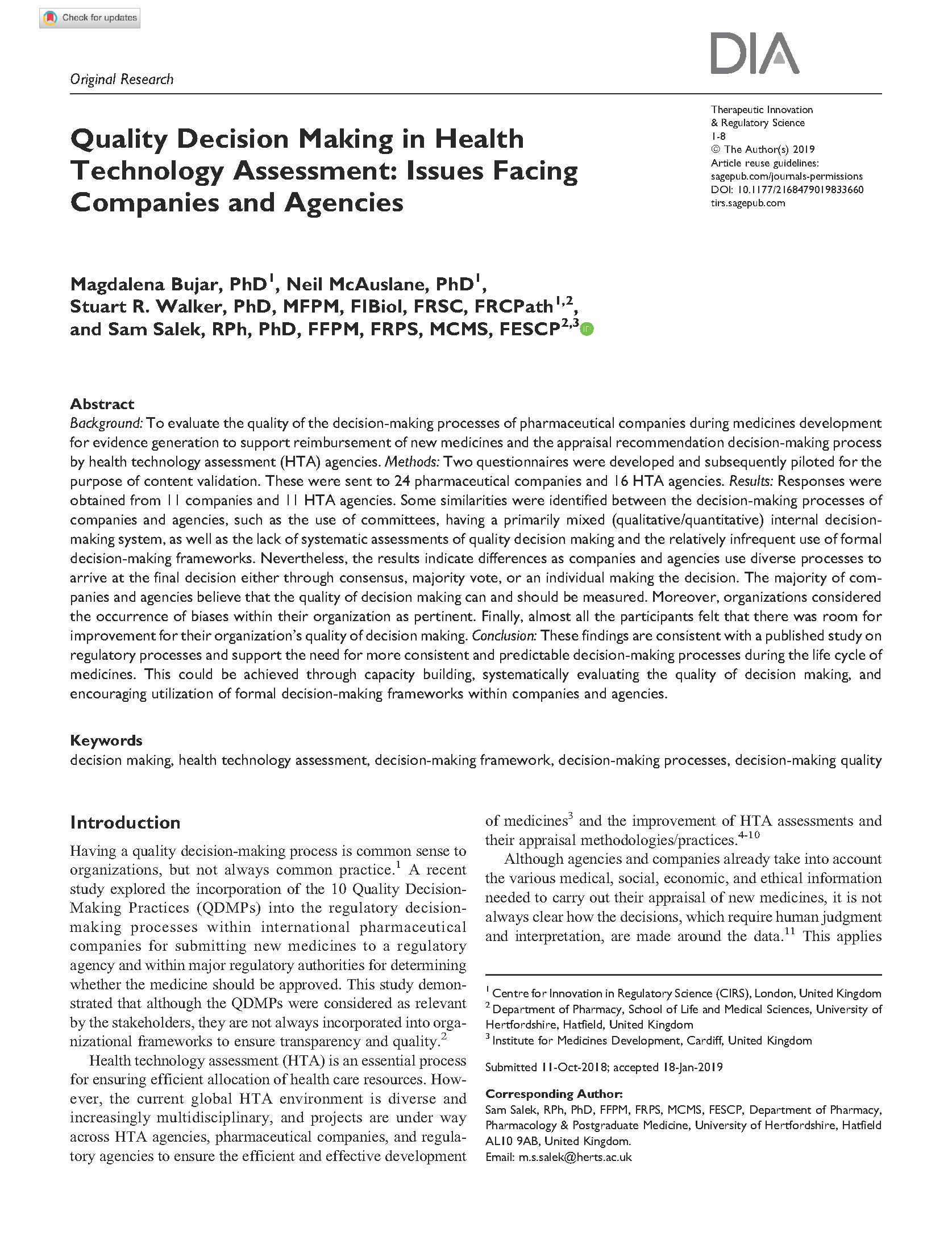Background: To evaluate the quality of the decision-making processes of pharmaceutical companies during medicines development for evidence generation to support reimbursement of new medicines and the appraisal recommendation decision-making process by health technology assessment (HTA) agencies.
Methods: Two questionnaires were developed and subsequently piloted for the purpose of content validation. These were sent to 24 pharmaceutical companies and 16 HTA agencies.
Results: Responses were obtained from 11 companies and 11 HTA agencies. Some similarities were identified between the decision-making processes of companies and agencies, such as the use of committees, having a primarily mixed (qualitative/quantitative) internal decisionmaking system, as well as the lack of systematic assessments of quality decision making and the relatively infrequent use of formal decision-making frameworks. Nevertheless, the results indicate differences as companies and agencies use diverse processes to arrive at the final decision either through consensus, majority vote, or an individual making the decision. The majority of companies and agencies believe that the quality of decision making can and should be measured. Moreover, organizations considered the occurrence of biases within their organization as pertinent. Finally, almost all the participants felt that there was room for improvement for their organization’s quality of decision making.
Conclusion: These findings are consistent with a published study on regulatory processes and support the need for more consistent and predictable decision-making processes during the life cycle of medicines. This could be achieved through capacity building, systematically evaluating the quality of decision making, and encouraging utilization of formal decision-making frameworks within companies and agencies.
Bujar M, McAuslane N, Walker SR, Salek S. Quality Decision Making in Health Technology Assessment: Issues Facing Companies and Agencies. Therapeutic Innovation & Regulatory Science. March 2019. doi:10.1177/2168479019833660

